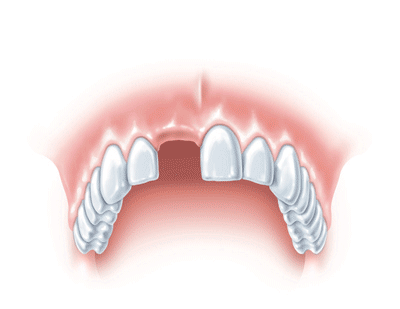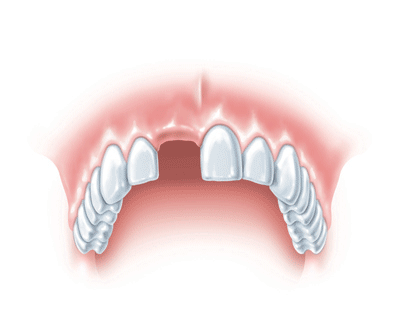01743 231001
About Implants

What is an implant
A dental implant is a small titanium screw, placed into the jaw bone where a tooth/teeth is missing, providing the most stable and long-lasting platform for the replacement of the missing teeth. Titanium dental implants were first used 50 years ago. Over time, extensive research has confirmed their reliability and efficacy making them the best possible replacement for missing teeth.

How do they work?
The main component is the titanium implant, a precisely manufactured screw with a specially roughened surface which makes it very compatible with bone. It is about the same size as a natural tooth root. Once placed into the bone it usually left to integrate (heal) for 6 - 8 weeks. Titanium is one of the few materials able to “osseointegrate", whereby the implant is accepted by the bone which fuses around it.
Once solid in the bone, the second element, a titanium post or connector known as the "abutment "can be fitted into the implant. The abutment allows the fixation of the final part of the implant – the crown (a replacement tooth). The crown is usually screw-retained or sometimes cemented in place - as with a crown on a natural tooth. The crown porcelain is custom-shaded to match the neighbouring teeth.
Other Options
Dentures

If you have missing teeth, filling the gaps can be achieved with a denture, bridgework or implants. To some, dentures are "dated" and “ageing" (perhaps something that their grandparents might have worn). Whilst often the cheapest option, they are bulky, cover large parts of the mouth, including palate and gums. Some dentures require unsightly clasps to hold them in place.
Bridges

Most fixed bridges involve preparing the teeth each side of the gap to support the bridge, effectively sacrificing some good tooth structure to replace a missing tooth. This cannot be reversed once the teeth are prepped.
Implants

Both dentures and bridgework fail to preserve the underlying bone around the missing / extracted teeth sites, where the gum continues to shrink throughout life. Dental implants can help limit this bone shrinkage. Unlike bridgework, implants do not involve cutting back the adjacent teeth, are a much more permanent solution and help prevent the ageing effect associated with gum shrinkage.
